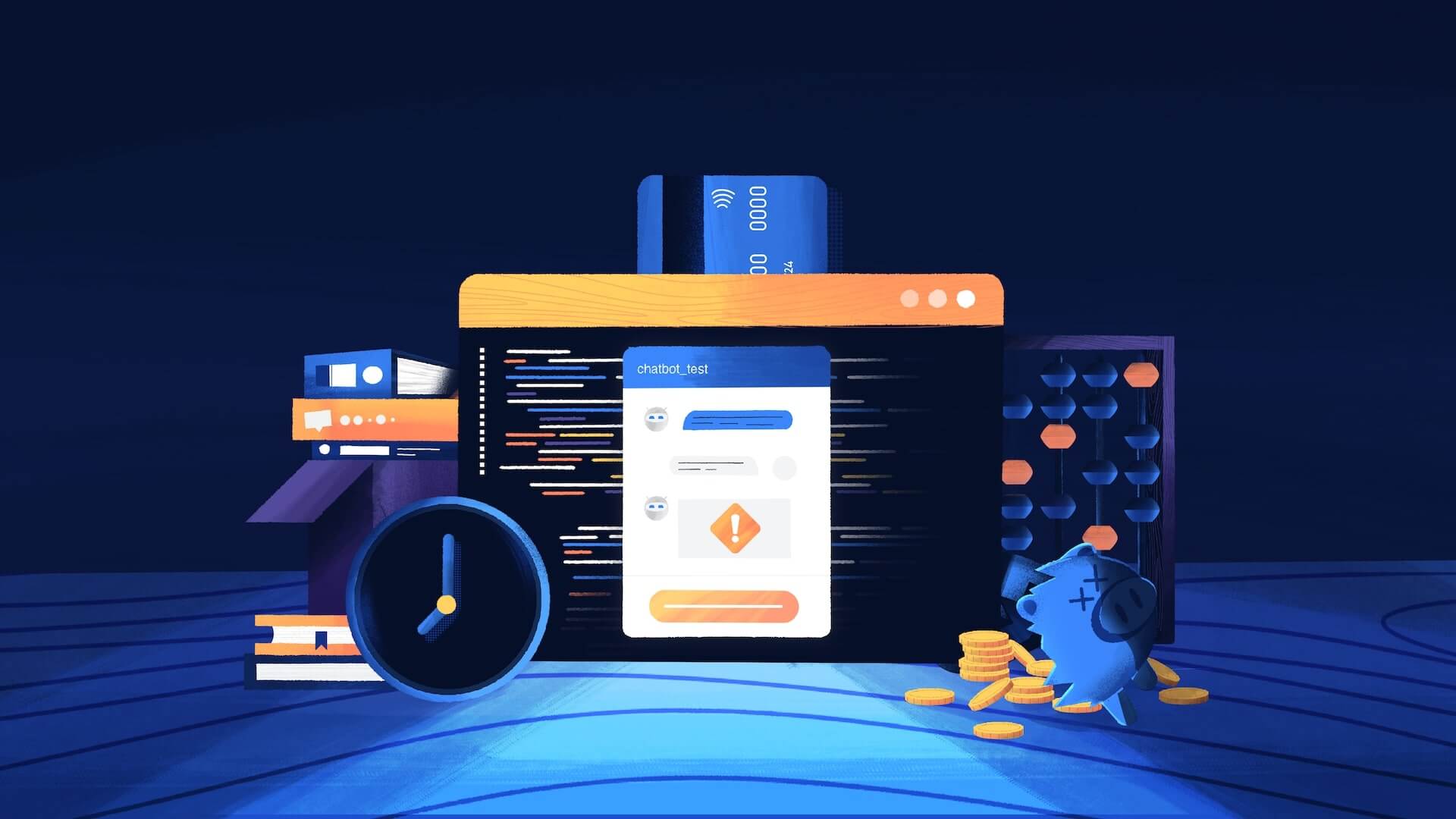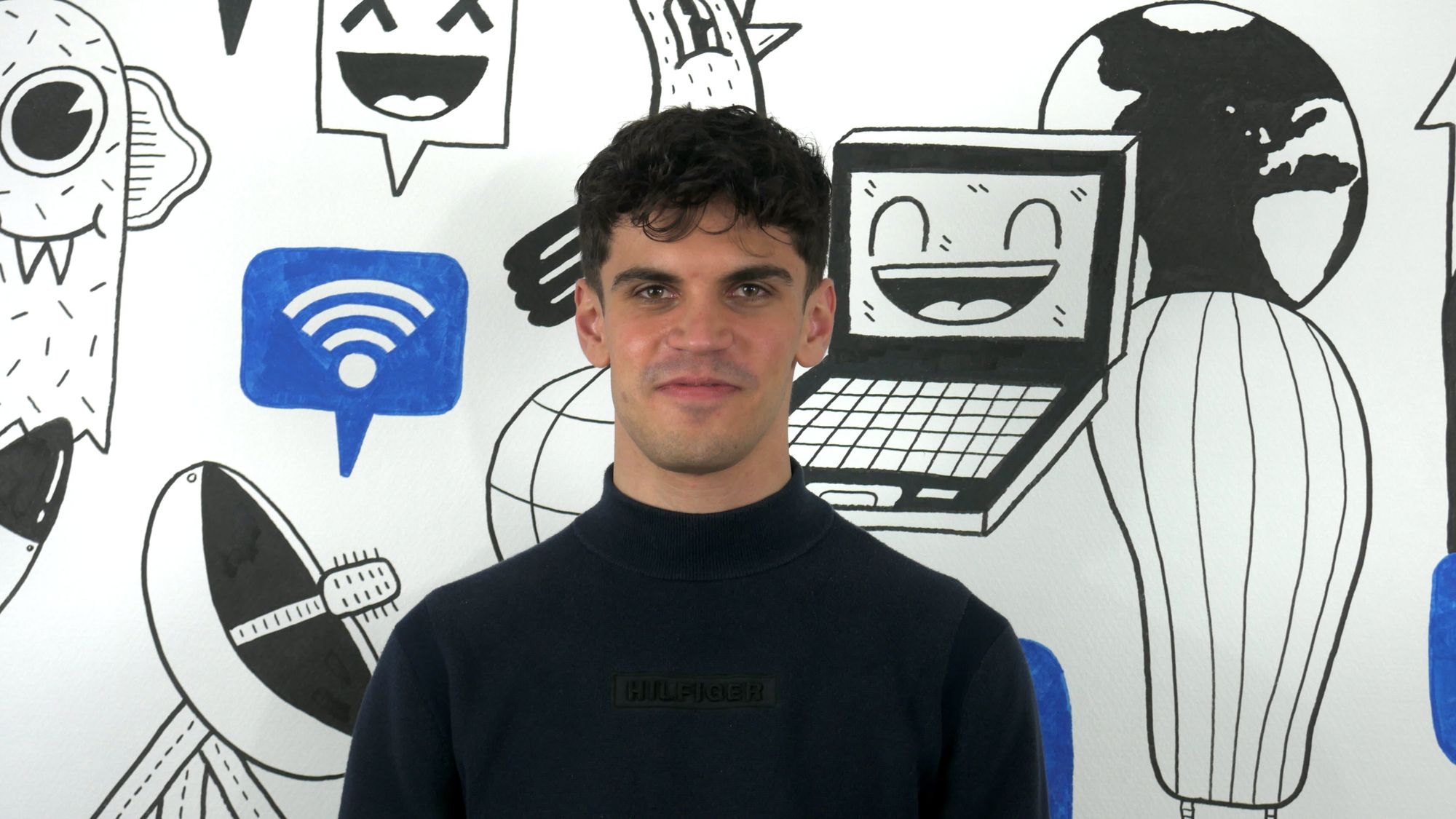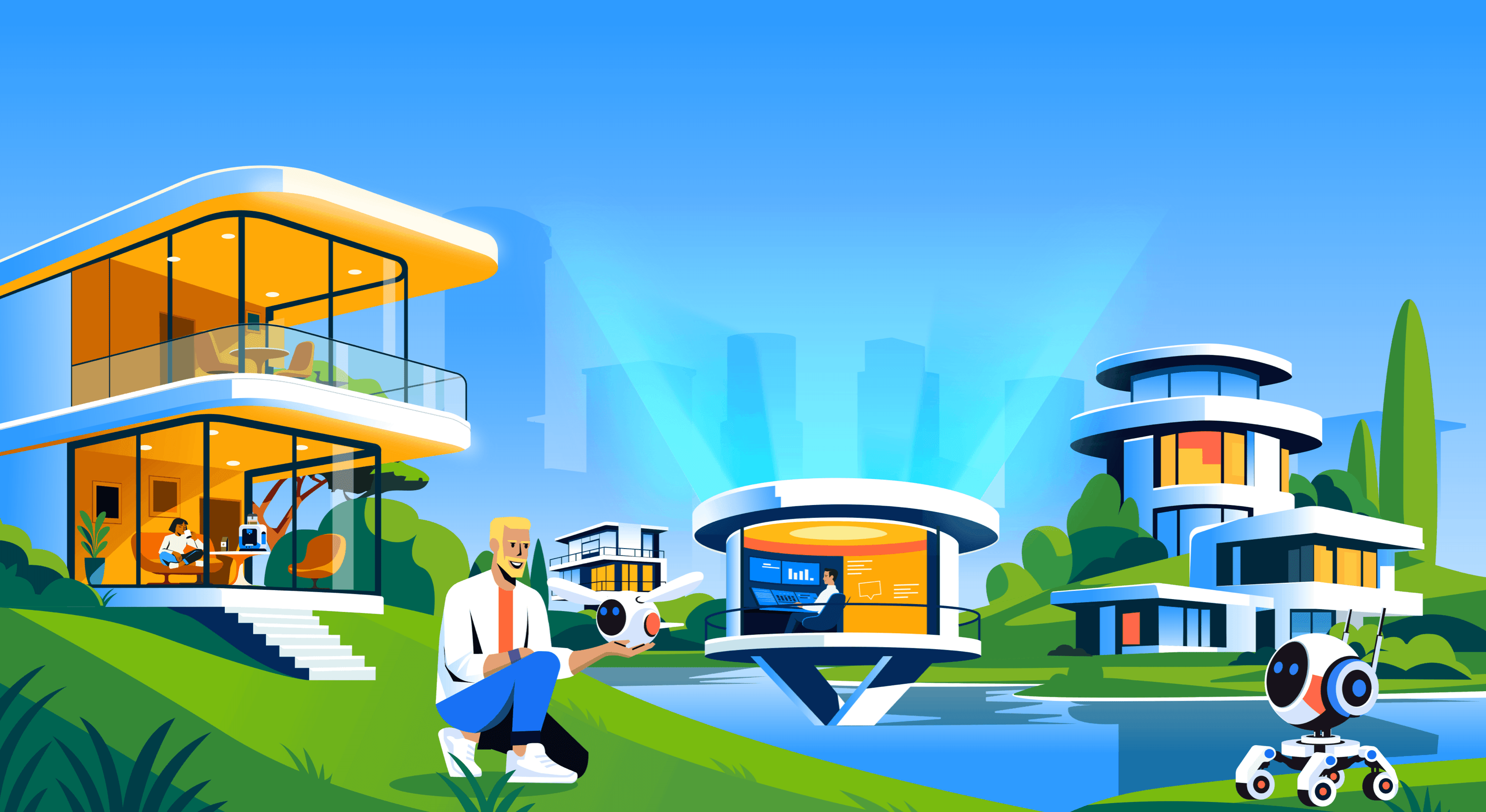With the recent publications about chatGPT and generative AI, more and more people are asking, "How do AI chatbots work?". However, rules-based chatbots still have a bright future. It is still vital to understand how a scripted chatbot works to get the impacts artificial intelligence has on bots too.
We can see two types of chatbots: scripted chatbots (aka rules-based bots) or chatbots powered by artificial intelligence. In the AI section, it's also common to distinguish conversational chatbots from virtual assistants powered by AI.
To give you a sense of the fast-evolving chatbot industry, let's deep-dive into the different types of chatbots and the way they work separately.
What are the different types of chatbots?
In the market, it is common to differentiate scripted chatbots from AI-based chatbots because their set of features and the way they work is totally different.
The thing is, they all have one purpose: to serve users or customers in a seamless and automated way.
What are the differences between a rules-based chatbot and an AI chatbot?
Differences between a scripted chatbot and an AI chatbot are numerous but here are the main ones you can think about when choosing the next chatbot software for your business:
- Creation
- Costs
- Behavior
- Multichannel
- Maintenance and evolutions
- Technology
What is a scripted chatbot?
Scripted chatbots (also known as rule-based chatbots) is a company-built chatbot that has pre-defined answers, rules, and behavior. The bot uses customized flow and can't move away from it.
Scripted chatbots are often used for very generic behavior and can be built through a chatbot builder that doesn't require any coding skills.
Rule-based chatbots often use very basic natural language processing skills. When building a scripted chatbot, it is important to think about the use case your company is trying to tackle because decision-tree bots will have to be built to follow that purpose.
How does a scripted chatbot work?
Let's get down to understanding how chatbot software works and how it is different from a chatbot using artificial intelligence. Following the criteria shared above, we're going to explain the differences.
- Creation: Scripted bot benefits from a builder that allows anyone in the company to craft and publish chatbots in minutes.
- Costs: Scripted bots are low-code/no-code solutions that are very affordable nowadays, it's very inexpensive.
- Behavior: Rules-based bots follow pre-defined rules and conversational workflows created by teams and departments.
- Multichannel: Modern chatbots can work on multiple channels at the same time.
- Maintenance and evolutions: Bots maintenance and evolutions are done by teams throughout time, thanks to learning and customers' feedback.
- Technology: Traditional bots are not able to learn anything from previous experiences.
Here is an example of what a scripted chatbot builder looks like:
What is an AI chatbot?
An AI chatbot is software that interacts with humans through conversation experiences, most commonly: text. Often, it is embedded in a web page or an app to answer customer inquiries with or without the help of humans.
Trained through machine learning, a subset of artificial intelligence, AI chatbots don't have to be built through a builder. However, they can be fine-tuned with an exclusive company dataset such as customer service conversations, internal knowledge base articles, Frequently asked questions, etc.
How does an AI chatbot work?
AI Chatbot means a lot of different things, as artificial intelligence is a trendy word that is being abused by marketers around the world.
If we compare how AI chatbots work with the same list we used for scripted chatbots, here is what we could say:
- Creation: AI chatbots benefit from pre-trained models that can be fine-tuned through different sources such as websites or help centers.
- Costs: AI chatbots are more expensive than scripted chatbots because they use intensive GPU resources, however, they're quite affordable for any business.
- Behavior: AI chatbots are autonomous and handle conversations based on their training set.
- Multichannel: Modern AI chatbots can work on multiple channels at the same time.
- Maintenance and evolutions: AI bots' maintenance and evolutions are done automatically through continuous learning, made possible thanks to machine learning.
- Technology: AI chatbots are leveraging the power of LLM innovations, such as the recent release of Llama 2 or Stable Diffusion XL.
That said, it is important to understand what "artificial intelligence" means for chatbots. As artificial intelligence contains different subsets of specific features, it is important to describe them so you can understand how chatbots work.
So among the different subset of "artificial intelligence", one can be described as follow:
Machine Learning
It provides intelligence through algorithm training with the ability to automatically learn thanks to previous experiences without the program being explicitly programmed.
Machine Learning can be supervised, unsupervised, or semi-supervised. Machine learning contains different subset that could be classified as follow: Deep Learning or Natural Language Processing, for example.
For chatbots, as we know them, most of them rely on natural language processing and deep learning, which can be seen as use cases for machine learning.
Natural Language Processing (or NLP) deals with the understanding and manipulation of human language. It is a field of machine learning and is usually combined with deep learning.
Deep learning is a network of interconnected nodes, or neurons and is composed of different layers. It is called "deep learning" because each input is passed on to another layer until classification or prediction happens. The deeper the network is, the more complex the learnings are.
As part of deep learning, Large Language Models (LLM) are the most common way to train an AI Chatbot.
What is a large language model?
As a use-case for deep learning, a large language model is an algorithm that recognizes, summarizes, translates, predicts, and generates text or other types of content based on knowledge gained from training led through massive datasets.
This is what we call "Generative AI". The video below explains it all very well and is very helpful to better understand what Large Language Models are ⬇️.
Large Language models are particularly interesting for generative AI because they are trained on a massive amount of data and can compile a huge amount of parameters.
Large in "Large Language Model" is for "large data set", sometimes at the petabytes scale. It also refers to a "Large number of parameters" because parameters are basically the knowledge and the memory that the machine learns from the training.
Parameters are made to define the skills of a Large Language Model, meaning the more parameters you have, the more expertise you get.
What are the most common use cases for Large Language Models?
The most common use cases for LLMs are the following:
- Text summarization
- Text classification
- Questions/answers
- Text generation
These are the most common use cases for which an AI chatbot is powerful. But offering these features isn't easy and requires specific work.
Because LLMs are not trained for your business. They are trained on public and generic data. Models need to be fine-tuned.
Challenges with LLMs and chatbots using large language models
- ➡️ Unsupervised training vs. supervised training
We often compare these two kinds of training, which occurs during the LLM's creation.
Unsupervised training relates to the fact that the LLM ingests a very large set of data that isn't labeled, it's perfect for a first batch of learning. It means the model is going to create relationships and patterns itself.
Supervised training relates to the fact LLM ingests a limited set of data that is seen as perfect. It is often used for fine-tuning an LLM.
- ➡️ AI hallucinations
Because AI chatbot work by predicting strings of works that best fits your query, they can send messages that are out of context.
Think of the following questions:
"Can you give me the phone number of my CrossFit teacher?"
"I want the best discount for your product, what is it?"
Could get in trouble, correct?
- ➡️ Costs of training and datasets
Not all companies can train and build their own dataset, that's why open-source is very powerful and useful for the AI community. Unless you have a very large amount of resources, you're not able to run LLM training because you need a huge architecture.
Latest LLMs released
There's a real race at the moment regarding LLMs, and a lot of companies are going full open-source, which is amazing!
Below are examples of powerful LLMs released over the past days and months.
- GPT4
- Palm2
- ClaudeV2
- LLamA 1 & LLama 2
- StableDiffusion XL
What is the difference between an AI Chatbot and a chatbot?
Going through the article you just read, you should be able to get a better answer to this question.
However, if things are not clear, here is a quick answer on what differences are between AI-powered chatbot and scripted chatbot:
Chatbots, as computer programs, mimic human conversations to enhance customer experiences. While scripted bots follow predefined conversation flows, AI chatbots employ artificial intelligence and natural language processing (NLP) to interpret user queries and provide real-time automated responses.
Can't decide which chatbot is right for you?
This decision becomes harder and harder as you begin to analyze all the possibilities regarding chatbots and AI chatbots. Luckily, we have a team of experts that can guide you through.
Whether you're looking for an AI chatbot or chatbot software, Crisp is here to help you scale your customer service.










